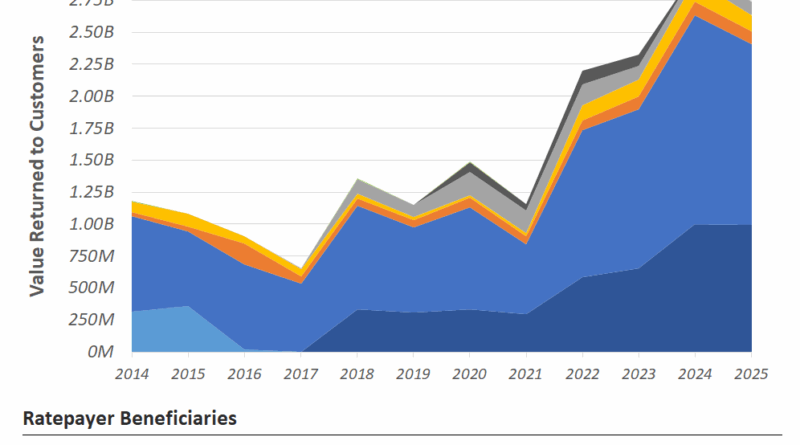Newsom Unveils Historic Climate Change and Energy Legislation
Governor Gavin Newsom is hitting the national headlines again by executing a comprehensive range of legislation aimed at addressing climate change and improving energy affordability for Californians. The bill signing event was nothing short of historic as it took place in the atmospheric setting of the Morrison Planetarium dome. This notable event signaled a bold endeavor not only to lower the cost of energy, but also to guarantee a more sustainable gas supply and vastly cleaner air – while simultaneously creating a surge of green job opportunities.
Governor Newsom was ebullient at the prospect of reform, projecting that this move will drive down electric bills, maintain the stability of gas supplies, and greatly reduce harmful air pollutants. This will spur on California’s journey towards a booming green economy. These developments serve as a reminder that reassurances and statements of intent alone cannot resolve issues as complex as energy pricing and infrastructure.
A significant measure within this broad package is the extension of the cap-and-trade initiative – now repackaged as ‘cap-and-invest’ – through to 2045. Such a rebranding subtly brushes over the fact that the scheme’s main tenets have remained largely untouched. Businesses are still mandated to limit their greenhouse gas emissions, purchase emission allowances, or put funds into offsets.
The revenue collected from emission allowance auctions is being directed for varied purpose. This includes redistribution, investment, and expenditure to varying degrees. Recent annual auctions have generated revenues upward of $3 billion, sometimes touching $4.3 billion. The proceeds from these auctions are put into action covering various sectors from forest fire prevention to transportation, accommodation, and utility allowances.
The California Air Resources Board reports that since its inception, the cap-and-trade/cap-and-invest systems have garnered nearly $33 billion from polluting entities. This fund has gone on to finance 117 projects aimed at bolstering clean energy and boosting community resilience. A considerable portion of these funds have gone towards Newsom’s ‘climate credit’ initiative, which pledges monetary refunds to utility customers.
The new laws also cater to disenfranchised communities and guarantee an annual allocation of $1 billion for high-speed rail. The association with the high-speed rail project comes amidst criticisms relating to cost exorbitance, untimely delays, and emissions impact disparity considering the cost.
In a tangible aspect, the price of electricity in California, as of 2025, sits at about 33.52 cents per kilowatt-hour. This pricing is roughly double the national average and among the steepest in the nation. A reflection of this can be seen in the high average utility bill that many households in Californians grapple with, approximately $186/month, a striking 29% more than the typical American household.
It is not just the exorbitant electricity tariffs that are a matter of concern. The reliability of the supply is a burden too – power outages contribute to social disruptions. California has experienced several serious blackouts over the past few years, particularly during periods of extreme heat waves. The summer of 2020, amid a harsh heat wave, brought with it wave upon wave of blackouts for hundreds of thousands of Californians due to supply scarcity.
Turning back the clock to the 2000-2001 electricity crisis, a lethal combination of market manipulations, drought conditions, and constrained capacities led to blackouts impacting 1.5 million households during a single event. Such problems are the consequence of omens generated when grid expansion, power generation, and permitting are rushed through.
The laws propose up to $60 billion in electricity bill refunds facilitated by the expanded California Climate Credit, but this is more complicated than it looks. The funds needed to facilitate these refunds originate from the same cap-and-trade revenues that ultimately inflate businesses’ costs, which are then forwarded onto consumers. Amid promises of affordability, a discernible trend of increasing burden remains.
Since 2015, electricity costs in California have been on a significant rise, contributing notably to the broader issue of affordability. Many households, particularly those with middle or low income, regard energy as a non-negotiable expense. Utilities, heating, cooling, or fuelling vehicles are necessities that require immediate financial attention.
Recent reports suggest that the estimated revenues from cap-and-trade are not as substantial as hoped. Estimates suggest that over the past year, the state has missed out on approximately $3 billion in revenue due to poor auction results and an imbalance of supply and demand for credits. When rebates or infrastructures are promised based on unstable revenue streams, the solution usually falls onto taxes, rate increases, or budget cuts in other areas.
Among Newsom’s package is a move to loosen drilling restrictions in Kern County to stabilize fuel supply, but the move is more symbolic than structural. Despite such easements, the erosion of refining capacity, due to environmental and regulatory pressures, has not been addressed adequately. A single county’s regulatory loosening cannot replace this lost capacity and bring down high gasoline costs.
A vital part of Newsom’s new initiative is an $18 billion enhancement to the wildfire fund, financed by ratepayers and shareholder corporations. While this step is a crucial one, utilities are still burdened with the costs of fire management, infrastructural reinforcement, and equipment aging, which are then passed onto residents.
Despite the framing of these accomplishment as ‘historic’ and balanced between environmental awareness and affordability, a discernible pattern emerges. It’s one of grandiose promises, a play of optics, delayed outcomes, and an uneven distribution of costs. With California importing electricity from nearby states during periods of insufficiency and a lack of regulations to attract private investments, the economic implications of these restrictions echo across the state.
What is perceivable from this signing of the bill by Newsom is one more layer of complexity, one more promise to be fulfilled ‘soon’, and another bill that will inflate costs before it restricts them. The $33 billion raised so far is merely a dent compared to the decade’s worth of costs endured by Californians. Leadership should ideally mean making clear trade-offs, rather than merely presenting grand gestures.

